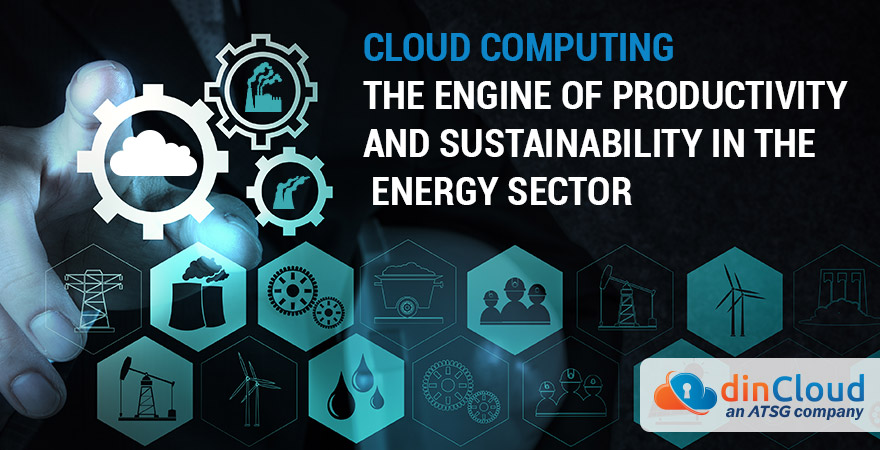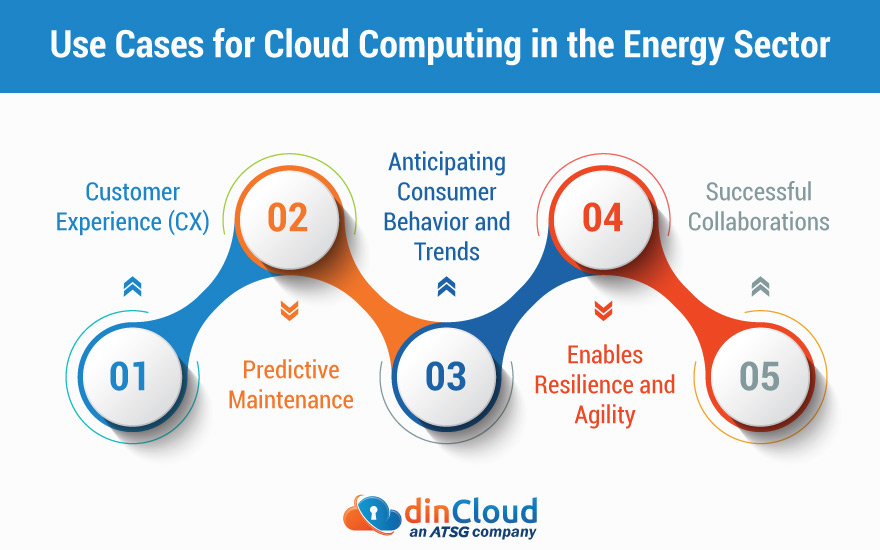There were both good and bad news that originated from the United Nation’s 2022 Intergovernmental Panel on Climate Change. The bad news is that the looming threat of climate change can have devastating near-term implications, that are likely to hit every single region of this world. The good news is that the scientists feel optimistic that by decarbonizing our atmosphere, we can slow down the otherwise fast-paced process of global warming.
Considering the latest trends, the Energy Sector is also undergoing a massive transformation phase. One reason for this transition is that a lot of voices have been raised against the grave threat of global warming. Today, the job of energy sector companies has expanded from just energy generation to renewable usage, digitization and even consumer engagement as well as active involvement. The Energy Sector can particularly use technology and digitalization as effective tools to reduce their carbon emissions.

Energy providers should no longer consider energy as just some commodity. Instead, they should fully embrace the latest means of digital differentiation, that are mostly centered around Cloud Computing solutions and technologies.
Is the Energy Sector Under Certain Pressures?
Before we dive deep into how Cloud Computing can help the Energy Sector, we have listed the following points to understand some of the challenges that the Energy Sector is actually facing right now.
- The global pandemic almost changed the entire market scenario, overnight. Energy Providers have to constantly be on their toes to retain their customers, by providing them top-notch and frictionless digitized experiences.
- Today, customers are a lot more conscious about the use of renewable energy. Renewable Energy Legislations around the world have also mandated the “green agenda” on the energy sector. Under such circumstances, this sector should adopt an all-encompassing business architecture, whose foundation is laid on sustainability and innovation.
- A lot of digital start-ups are making their way into the energy sectors. They pose a great threat to the already established Energy Providers, as new setups have the liberty to experiment more. Customers also have the option to easily switch between Energy Providers, due to the increasingly de-regulated nature of this sector in a lot of countries.
- Certain large tech-based energy startups are spending huge sums to on-board an overwhelming number of customers. They outrun the market competition and use innovative strategies to retain these customers.
Considering all these challenges, the Energy Sector must adopt the latest Cloud Computing solutions to gain a competitive edge in today’s fierce market.
Is Cloud Computing the Answer to our Energy Problems?
Cloud Computing is a crucial technology that enables Energy Providers to effectively combat each other on the attributes of technology and innovation. This is made possible by eliminating the entry barriers companies typically face when setting foot into such capital intensive sectors like Energy. Cloud Computing solutions also address the concerns of such companies when it comes to regulatory compliance.
According to a report from a Technical Consultancy Firm, 64% of the enterprises found the Cloud to be more secure, when compared to on-premise solutions.
With Cloud migrations, there is a visible difference in how multiple Energy Companies are utilizing their data for infrastructure assessments, operational optimization, demand and supply predictions and the ever changing trading conditions in the market.
It is a lot more feasible and convenient to employ Cloud Service Providers (CSPs), who handle and maintain huge hardware setups, massive processing power and facilitate cutting edge technology, rather than making huge investments in on-premise solutions.
Related Posts:
- How are Cloud Computing and the Internet Re-Shaping Our Future?
- Cloud Computing Business Applications and Implementations
- 10 Compelling Reasons SMBs Need Cloud Computing
- 10 Frequently Asked Questions (FAQs) about Cloud Computing
Use Cases for Cloud Computing in the Energy Sector
From customer interactions to sourcing energy from suppliers, Cloud Computing has positively changed the way Energy Sector traditionally worked. The following points show some Cloud use cases in the Energy Sector.

1. Customer Experience (CX)
With the help of Cloud Computing, Energy Providers can evaluate their customers’ present energy demands to predict their future energy usage. This forecast of energy usage patterns can help them plan energy saving opportunities for their customers.
Another Cloud-based feature that greatly improves CX is Cloud-hosted Contact Centers. Take dinCloud for instance, a reliable CSP that facilitates its users with Cloud Contact Centers for better communication and improvements in customer engagement. These cost-effective Cloud Contact Centers improve CX, by having excellent teams for customer support, and even for the on-boarding of new customers.
2. Predictive Maintenance
Machine Learning (ML) algorithms and Cloud-powered asset management programs can help enterprises effectively monitor their assets and operational efficiencies. These tools can be used to predict the most suitable time to schedule maintenance and arrange backups, so that power outages can be avoided, or minimized to the best extent possible.
3. Anticipating Consumer Behavior and Trends
The importance of customer retention cannot be emphasized enough. According to a report by global transformation consultancy firm, Contino, a mere 5% increase in customer retention rates can increase enterprise profits by as much as 25-90%.
When energy companies, or even enterprises, do something wrong, or their competitors manage to provide greater value to customers, it creates a friction, also called customer churn. This can cause enterprises to lose their customers to competitors.
ML makes it easier for large organizations to predict churn and “urge” customers to stay. For instance, if a consumer forgets to submit a due electricity bill, automated notifications can constantly remind about it, instead of giving the consumer un-welcome surprises in subsequent bills.
4. Enables Resilience and Agility
The Energy Sector is highly regulated. It also has a dispersed workforce, working in offices, remotely and most of the times, on-site. Energy Companies should adopt agile approaches towards their operations, which help them become responsive to various uncertainties and challenges.
For the Energy sector, a great solution to these challenges is to leverage all the benefits that stem from the adoption of Cloud Computing solutions.
5. Successful Collaborations
Teamwork and collaborations are key to any organization’s success, as the famous saying goes, “two heads are better than one”. Cloud Computing powered IT infrastructures, software solutions and automation can further improve the way energy solutions are offered to household, commercial as well as industrial consumers.
Again, Cloud Computing can play an instrumental role in ensuring seamless communications and collaborations across enterprise environments.
Conclusion
Amidst the current economic and geo-political circumstances, the Cloud has acted as an enabler for organizational resilience, competitiveness, productivity and sustainability.
As priorities of the Energy Sector shift, and the volume of their data increases manifold, there has never been a better time to accelerate Cloud-based adoptions. Cloud Providers are also approaching energy companies with robust value propositions now. The Energy Sector is all set to embrace innovative and agile Cloud Computing solutions, ushering in a brighter and sustainable future.
For endless possibilities and optimal Cloud Computing solutions for your enterprise, feel free to contact dinCloud, an ATSG company.


